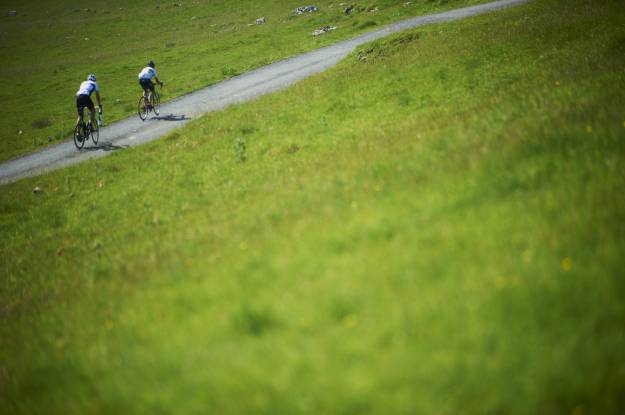Daily Commuting Tips - Climate Control for Cyclists
5th November 2009 | Eddie Allen
More: Daily Commuting Tips Archive
 Any rider who's used to riding in the British autumn and winter will tell you that it's a fine art - a three-way balancing act between staying dry, keeping warm and not overheating.
Any rider who's used to riding in the British autumn and winter will tell you that it's a fine art - a three-way balancing act between staying dry, keeping warm and not overheating.
When you drive a car it's a whole lot simpler. The tin box you're sitting in takes care of keeping you dry and that dial on the dashboard with the blue and red markings lets you regulate your temperature.
However on a bike it's different. You're exposed to the elements. You are dealing with both the ambient temperature and the fluctuating heat that your efforts at the pedals are generating. One minute you're freewheeling down a steep hill at 25mph and rapidly cooling down. The next minute you're puffing up another hill at 7mph. Add in the fact that you're riding through rain showers wearing a waterproof jacket, and it becomes difficult to get the balance right and avoid that ‘boil-in-the-bag' cyclist effect.
This is where you use your ‘cyclist's climate control'. At the bottom of that steep hill, unzip your jacket halfway and let cooling air circulate beneath your jacket. If the rain starts or at the top of a long downhill, zip back up and keep warm.
Use your gears to find a rhythm where you're just ‘ticking over' and not working so hard that you start to sweat inside your jacket. On the flat and with no headwind to contend with, I find, a pretty high gear and a slow loping cadence is best - just enough effort to maintain forward motion. Many riders make the mistake of dropping down through the gears and spinning because it feels easy on the legs. The fact is that this kind of high cadence pedalling will raise your body temperature far more than the low end ‘diesel' lope.
When dealing with hills or headwinds gear down but don't go overboard. Drop your speed to a manageable level and let your average speed take a slight hit. Riding hills or headwinds at 10mph rather than 12mph means a hugely reduced effort - for a minimal increase in journey time. Factor in that if you get it right, you won't have to get changed at your destination - therefore and you're looking a net speed gain.
The key is to be smart and adaptive - read the road ahead and the weather conditions. Gear-up or down, zipper-up or down BEFORE you start to overheat or overcool - the key is to maintain a STEADY temperature.
All of these tips used together will help you achieve sweat free cycling. And sweat free is the best way of integrating cycling with daily life. So remember, use your zipper, your gears and your brain as your climate control.








